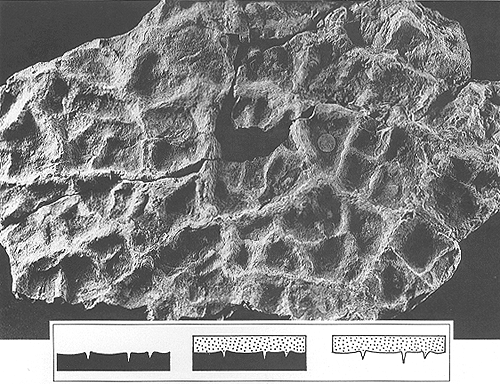
Fossil desiccation cracks (molds or fills)
Plate 106

Fossil desiccation cracks (molds or fills)
Plate 106
If the mud polygons do not curl up completely, the cracks can fossilize; this happens by means of the sediment that buries them, for example sand. After diagenesis, the filling material can become more resistant to weathering and the cracks are preserved as casts (see inset). Fossil mud cracks are very useful as indicators of subaerial exposure; they can be found in both continental sediments and marine or littoral deposits that emerged subsequently. The emergence of a marine environment means a regression. On the other hand, cracks made in continental environment and filled by marine sediments will indicate a submergence, i.e., a transgressive event.
Fossil desiccation cracks and their molds can also be used as indicators of stratigraphic polarity (way-up criterion).
Upper Triassic (Raiblian) red beds, southern Alps.
| Photo: P. Ferrieri 1992. |